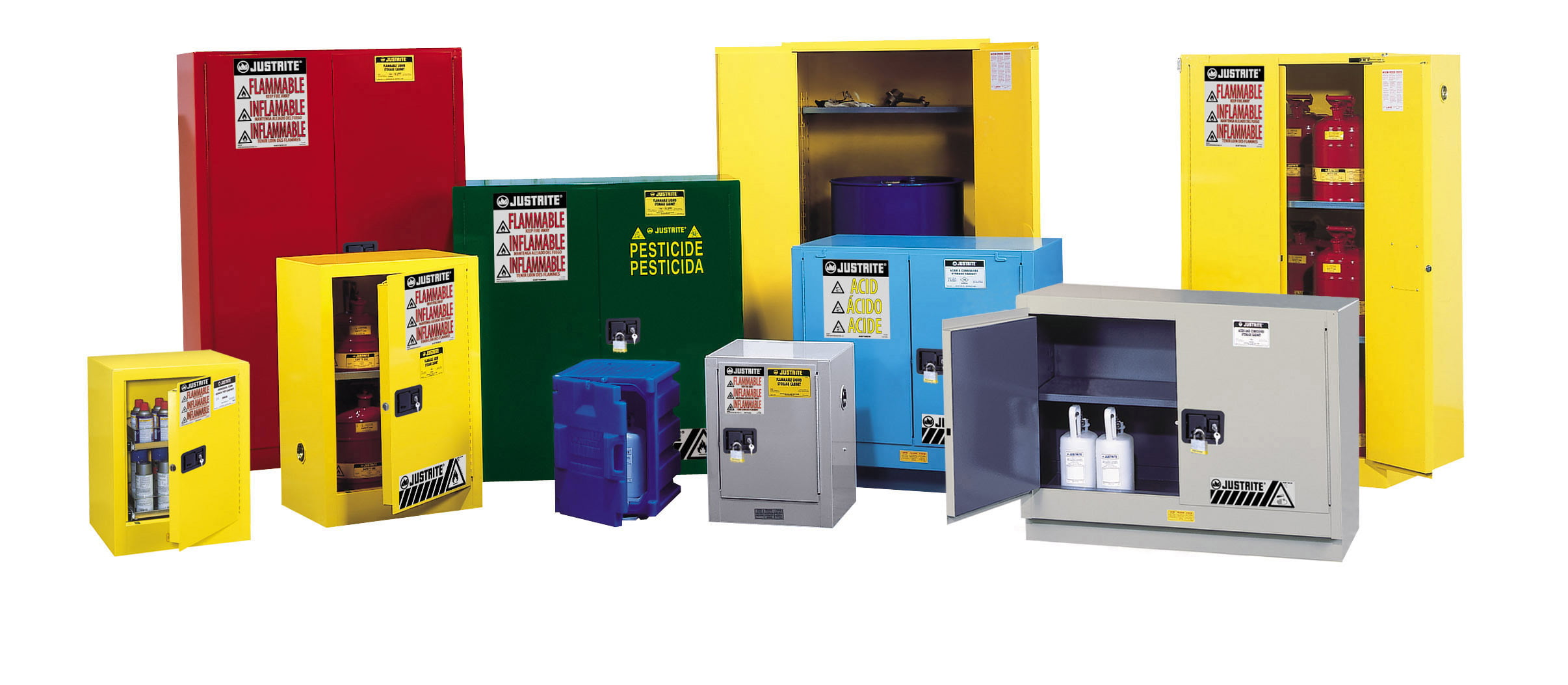
Rooms should meet certain construction standards to be able to store flammable liquids. It decreases the risk of personal injury and prevents damage to equipment and property. Flammable chemicals have to be separately stored, away from incompatible chemicals. Mixing incompatible chemicals accidentally might cause containers to break and generate gases, fire or heat and may possibly create a toxic substance. Therefore, chemicals have to be stored in their compatible groups and not en masse alphabetically, which might procedurally lead to incompatible groupings. To get information regarding incompatible substances, you can consult the MSDS sheets.
There are a range of storage cabinets available for flammable chemicals and this article aims at giving you a comprehensive idea about the same. First of all, there are two kinds of storage cabinets; one is made of metal and the other of wood. Both the wooden and metal cabinets must be put through a 10 minute fire test that has been outlined in Standard Methods of Fire Tests of NFPA 251-1969. The cabinets must be built in a way to not have its internal temperature rise above 325° F. Not only should the doors remain securely closed, but the seals and joints should be tight during the fire test.
Metal Storage Cabinets: Certain things to keep in mind about the metal storage cabinets are:
- Its construction should be done at least with 18 gauge sheet iron and it should be double-walled with an air space of one and a half inch.
- Cabinets should be made tight by welding or riveting the joints.
- Cabinet door must have a three point lock on it.
- There should be a distance of at least 2 inches between the doorsill and the cabinet bottom.
- Code 30 of National Fire Prevention Association has no requirement of venting for purposes of fire prevention. However, in case the cabinet is vented, it must be vented to the outdoors from bottom.
- For cases where local regulations necessitate venting, cabinets have vents manufactured in them with removable plugs which can be removed on requirement.
- It is important that the cabinets are labeled clearly to state “FLAMMABLE – KEEP FIRE AWAY”.
Wooden Storage Cabinets: Certain things to ensure about wooden storage cabinets are:
- Cabinet should be constructed with the top, sides and bottom of plywood that is of approved grade and has a thickness of at least 1 inch that will not delaminate or break down due to fire.
- Joints in the cabinet should be fastened and rabbeted with flathead screws in two directions.
- Not less than one inch of rabbeted overlap should be there if there is a use of more than one door.
- Hinges should be mounted in a way to not lose their holding capacity due to burning out or looseness of screws on being tested for fire.
Maximum Capacity for Storage Cabinets: The maximum capacity is 60 gallons for Class I and Class II liquids which should not be exceeded. However, for Class III liquids is not more than 120 gallons.
Maximum Flammable Storage Cabinets to be allowed in One Fire Area: Three flammable storage cabinets per fire area can be allowed in areas with no sprinklers. Cabinets should be hundred feet apart with three per each travel distance of hundred feet. And there should be six per fire area in case of Automatic Sprinkler System.
Safety Check: Certain safety checks that you should keep in mind when it comes to storing flammable chemicals.
- It requires an approved storage room or a designated and approved cabinet to store flammable liquids.
- Chemicals that are incompatible should be isolated and kept apart.
- Flammable solids and liquids should not be stored together.
- Flammable chemicals should be stored away from any source of open flame and heat, even direct sunlight. Even sources of static electricity should be eliminated.
- Cabinets should be dry and clean.
- Explosion proof refrigerator featuring special design should be used for chemicals requiring extra cool temperature.
- Flammable liquids should remain capped always and never kept out of the cabinet or on a work bench.
- Well-ventilated areas should be used for transferring the liquids utilizing safety pumps, safety cans, closed piping system and self-closing faucets. No means of air pressure should be used in the transfer. And a bonding and grounding system should be present for the process of transfer.
- Spills should be immediately cleaned up following required procedures.

